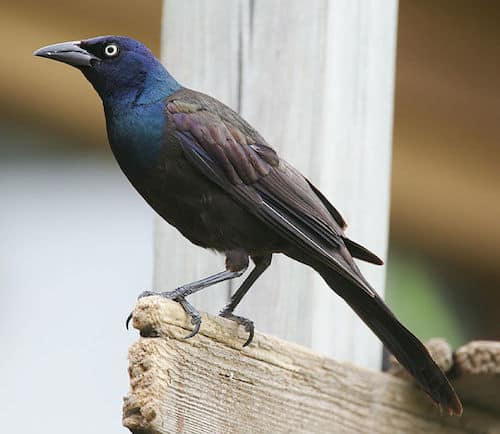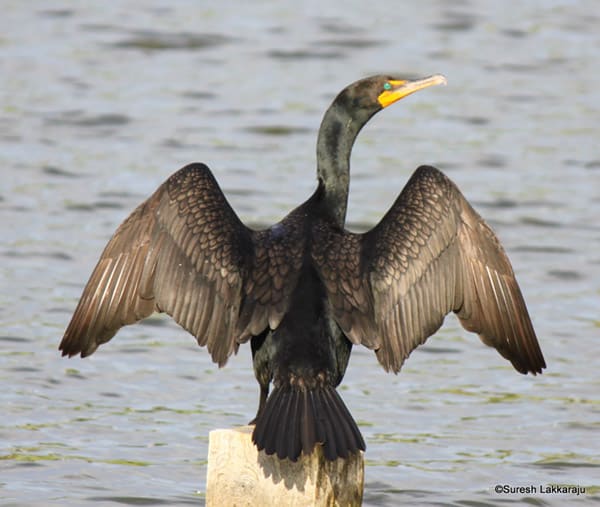Look For
Nearly half of the common grackle’s 12 ½-inch length is its tail. The grackle’s black plumage is glossy and can show bright purple, bronze, or green highlights, especially on the head. Adult common grackles show a pale yellow eye, contrasting sharply with the dark head. The powerful bill is long and sharply pointed. In flight, grackles hold their long tails in a “V”, much like the keel of a boat. Males and females are very similar in appearance.
Listen for
Common Grackles make a variety of weird sounds. Their song is a series of squeaks, whistles, and grating scrapes: krr-zheee! zhrrrt! Call note, often given in flight, is a deep, sharp cack!
Find it
Grackles are large, conspicuous, and noisy birds that are equally at home in a town or country setting. This species benefited greatly from the European settlement of North America as forests were turned into farm fields and new feeding and nesting opportunities emerged for the common grackle. Residential areas and farmland are particularly attractive to grackles.
Common grackles are found in almost every habitat in eastern North America; though, in winter the population is more concentrated in the eastern and southern United States. Grackles prefer edge habitat and open areas with scattered trees or shrubs.
From late summer to early spring, grackles gather in large roosts with other blackbirds. These roosts can contain as many as half a million birds, and are notable both for their noise and their droppings. Spring migrants may reach breeding territories as early as mid-February. Fall migration begins in September and peaks in October.
Feed it
During breeding season, grackles eat mostly insects, but they are opportunists and will take nestling birds or eggs, small fish, mice, and frogs. In winter the diet shifts to seeds and grain. The impact of foraging winter flocks on crops has earned the common grackle a reputation as an agricultural pest. Most of the grackle’s foraging is done on the ground, where the birds toss aside leaves and rubbish to uncover their food.
Nesting Behavior
Grackles prefer to nest in dense conifers, close to rich foraging habitat. The large, open, cup nest is built by the female from grass, twigs, and mud and is lined with soft grass. She incubates the four to five eggs for about two weeks. The male joins her in feeding the nestlings an all-insect diet until fledging time arrives about 20 days later.
WOW!
Common Grackles will capture bats in the air and eat them. They also ambush House Sparrows in parks and near bird feeders, knock them on the head, and eat them. Eeewwww!
Listen to a common grackle:




